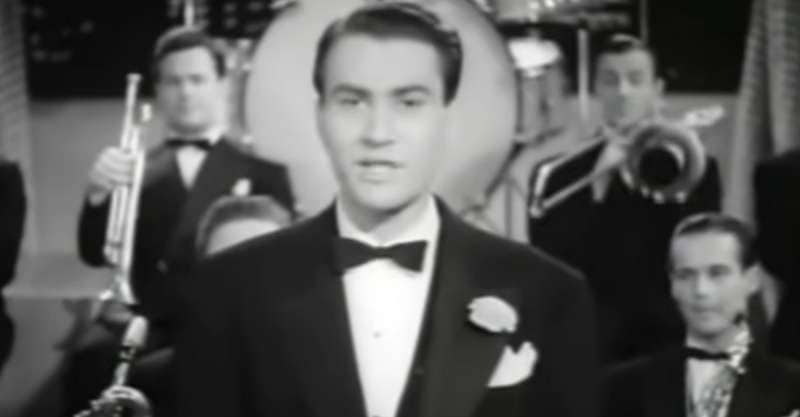
In this blog post, we’ll take you on a nostalgic journey through the best songs from 1938. Look out for renowned performers like Ella Fitzgerald, Artie Shaw, Bing Crosby, and many more.
“Begin the Beguine” By Artie Shaw
Song year: 1938
Artie Shaw’s rendition of “Begin the Beguine” quickly became a sensation in 1938, reaching Number 3 in the charts and solidifying its place as one of the best songs from that year.
Composed by Cole Porter in 1935, this captivating jazz tune features lively big band arrangements and phenomenal swing music elements that instantly capture listeners’ attention.
The song was recorded for RCA Bluebird and went on to become one of the best-selling records of 1938, demonstrating its impact on both popular music and the jazz scene.
“Bei Mir Bist Du Schoen” By the Andrews Sisters
Song year: 1938
The Andrews Sisters, one of the most popular and influential vocal groups during the swing music era, took the American music scene by storm with their 1938 hit “Bei Mir Bist Du Schoen.” This catchy tune is an Anglicized version of a Yiddish theater song and quickly put the Andrews Sisters on the map.
Interestingly, “Bei Mir Bist Du Schoen” was not The Andrews Sisters’ first shot at success; their initial single, released in 1937, failed to make much of an impression. However, after reworking it into its well-known English adaptation with lyrics by Sammy Cahn and Saul Chaplin (who later gained musical fame as the song idea composer for Hollywood hits), they soared to international stardom virtually overnight.
Even though “Bei Mir Bist Du Schoen” may have been just one highlight from a year filled with memorable tunes – such as Bing Crosby’s “I’ve Got A Pocketful Of Dreams,” Fred Astaire’s “Nice Work If You Can Get It,” or Ella Fitzgerald’s iconic “A-Tisket A-Tasket” – there’s no denying that this signature piece solidified The Andrews Sisters’ place in musical history.
“A-Tisket A-Tasket” By Ella Fitzgerald
Song year: 1938
Ella Fitzgerald’s breakthrough hit, “A-Tisket A-Tasket,” in collaboration with the Chick Webb Orchestra, took the music scene by storm back in 1938. Co-written by Fitzgerald and Al Feldman, this infectious tune was based on a nursery rhyme recorded in America since the late nineteenth century.
This musical gem struck a chord within popular culture at the time, quickly becoming an iconic representation of Jazz music and showcasing Fitzgerald’s incredible vocal prowess.
The song not only became widely celebrated during its time but has also managed to withstand the test of time as other artists continued to record their renditions throughout the years.
“A-Tisket A-Tasket” is an excellent example of collaborative songwriting done right – blending pop-culture hooks with deeper musical roots from nursery rhymes while showcasing unmatched talent through engaging performances.
“Thanks for the Memory” By Bob Hope & Shirley Ross
Song year: 1938
“Thanks For the Memory” is a classic song from the film “The Big Broadcast of 1938,” sung as a duet by Bob Hope and Shirley Ross.
The song features lyrics that evoke nostalgia for memories shared between two people who are about to part ways. Hope and Ross’ voices blend perfectly on this track, making it a memorable duet that showcases their vocal abilities.
It’s worth noting that both Bob Hope and Shirley Ross were also famous actors during their time in Hollywood. They appeared together in several films other than The Big Broadcast of 1938, where they performed dynamic musical numbers apart from acting scenes.
“Wabash Cannonball” By Roy Acuff
Song year: 1938
This classic tune is based on an earlier song, “The Great Rock Island Route,” in 1882 by J.A.
Despite being released originally in 1938, Roy Acuff’s version of “Wabash Cannonball” chartered years later in 1964, showing how timeless this classic is. Today, it remains widely known as representing Americana culture and country music history.
As one of the greatest examples of railroad-themed songs that defined generations past, “Wabash Cannonball” continues to capture audiences with its spirited sound and nostalgic lyrics resonating with folk music enthusiasts worldwide.
“Change Partners” By Fred Astaire
Song year: 1938
“Change Partners” is a memorable song recorded by Fred Astaire with Ray Noble and His Orchestra in 1938. Written by Irving Berlin, this song became popular and was nominated for the Best Song award at the 1938 Academy Awards, winning Best Art Direction instead.
The song was featured in the film “Carefree,” which starred Fred Astaire and Ginger Rogers. In this romantic comedy, they dance their way through various scenes while charming audiences with their chemistry on screen.
With over 100 similar songs identified to “Change Partners,” it remains one of the most notable songs in Fred Astaire’s extensive repertoire as a talented singer and dancer.
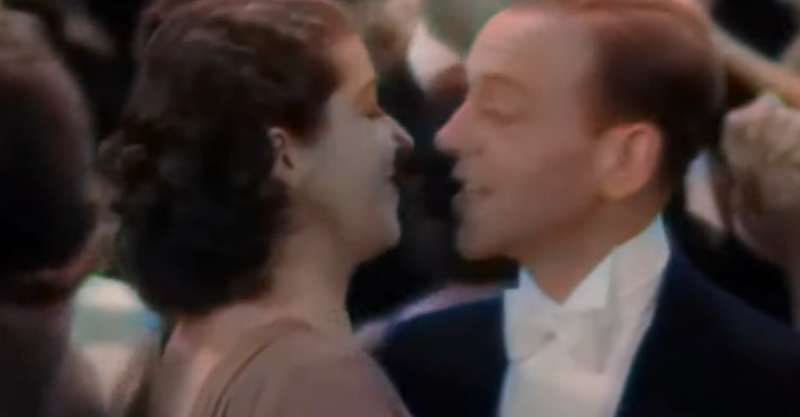
“Don’t Be That Way” By Benny Goodman
Song year: 1938
“Don’t Be That Way” by Benny Goodman is one of the most iconic swing songs of its time, dominating the United States in 1938. This single was written by Benny Goodman himself, along with Mitchell Parish and Edgar Sampson.
The song gained even more recognition after it was performed at The Benny Goodman Orchestra’s famous Carnegie Hall concert in 1938. This event marked a turning point for jazz and introduced it to mainstream audiences.
Performing alongside his orchestra, Benny brought together some of the greatest musicians of his time and allowed for innovative musical collaborations to take place within the industry.
“I Can’t Get Started” By Bunny Berigan
Song year: 1938
Bunny Berigan, a prominent jazz trumpeter with Benny Goodman and Tommy Dorsey, stands out for his memorable rendition of “I Can’t Get Started.” The song itself holds a special place in the world of music as a popular standard.
Written by Vernon Duke and Ira Gershwin, it tells the story of a lover struggling to find the words to express his feelings.
Berigan first used “I Can’t Get Started” as his theme song when he started his band in 1937. A year later, on November 19th, 1938, he famously performed with the CBS Saturday Night Swing Club using that same tune.
His performance was met with great acclaim from both fans and critics alike. He brought an infectious energy to the piece that made everyone want to dance along.
Despite being recorded over eighty years ago today, “I Can’t Get Started” remains relevant even now-mentioned in numerous films such as Martin Scorsese’s Goodfellas and Woody Allen’s Radio Days-and has been covered by countless artists over time because Bunny had shown us just how transformative Jazz can be when played well.
“I’ve Got a Pocketful of Dreams” By Bing Crosby
Song year: 1938
“I’ve Got a Pocketful of Dreams” is an upbeat and cheerful song by Bing Crosby, released in 1938. It quickly became one of the most popular hits that year, featuring catchy lyrics and a lively melody that captured the hearts of many Americans during the Great Depression era.
Aside from its popularity on radio stations nationwide, “I’ve Got a Pocketful of Dreams” gained further recognition when it was featured in the classic Hollywood film Captain Courageous starring Spencer Tracy.
Since its initial release over 80 years ago, “I’ve Got a Pocketful of Dreams” has been covered by artists such as Barbara Lea, Jackie Paris, and even Bing Crosby’s son, Gary Crosby.
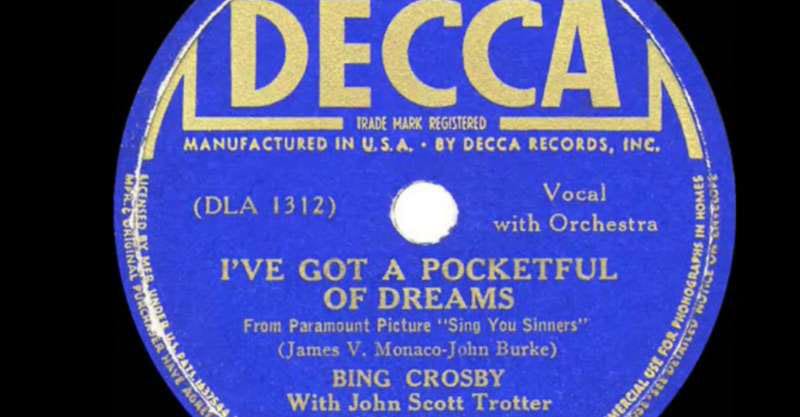
“You Must Have Been a Beautiful Baby” By Bing Crosby
Song year: 1938
“You Must Have Been a Beautiful Baby” is one of the top songs from 1938 and a classic in Bing Crosby’s music repertoire. The song was written by Harry Warren and Johnny Mercer, two legendary songwriters behind many hits during that era.
The song became very popular, thanks to Bing Crosby’s charming vocals and the catchy melody that stays on your mind long after you’ve heard it. It has since been covered by various artists, including Dinah Shore, Dean Martin, and Diana Krall.
“You Must Have Been a Beautiful Baby” is an iconic song that captures the essence of swing music from 1938. Its playful lyrics and catchy melody make it an enjoyable tune to listen to even today.
“Heart & Soul” By Larry Clinton
Song year: 1938
“Heart & Soul” is a timeless classic first composed and performed by Larry Clinton and his orchestra in 1938. The song’s beautiful melody, catchy lyrics, and stunning vocal performance by Bea Wain ensured its lasting popularity.
Larry Clinton’s “Heart & Soul” version showcases his exceptional musical composition skills and orchestration abilities. His use of instruments such as saxophones and trumpets and Bea Wain’s remarkable singing talent create a beautiful amalgamation of big band jazz music that is still appreciated today.
Unsurprisingly, “Heart & Soul” became such a success, ranking #11 on the top pop charts for 1938.
“Alexander’s Ragtime Band” By Bing Crosby & Connee Boswell
Song year: 1938
“Alexander’s Ragtime Band,” originally written in 1911 by Irving Berlin, became a number-one hit once again in 1938 when it was performed as a duet by Bing Crosby and Connee Boswell.
The song is considered one of the best from that year, and for good reason – its catchy melody, upbeat tempo, and clever lyrics make it a classic.
The popularity of “Alexander’s Ragtime Band” endured beyond 1938, with other artists covering the song over the years. Alice Faye performed it with several Hollywood stars in the movie of the same name released that year, while Crosby recorded another version of his own later on.
It’s not just about the rhythmic beat or lyrical content, though; interesting anecdotes surround this beloved tune like Alice Faye performing to millions across America on radio broadcasts during WWII to cheer up troops overseas.
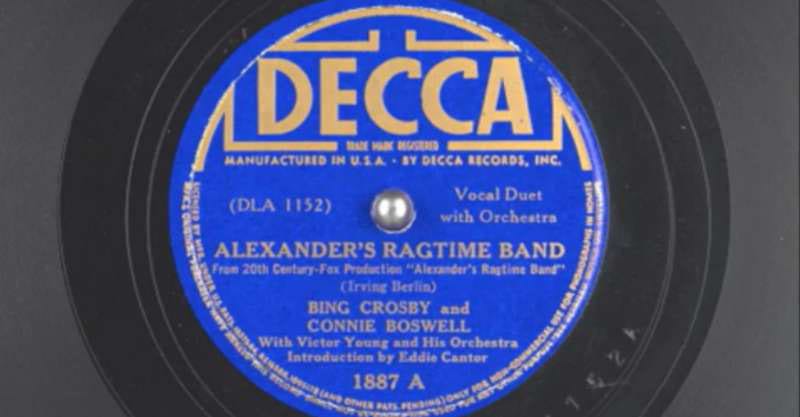
“Music, Maestro, Please” By Tommy Dorsey
Song year: 1938
“Music, Maestro, Please” by Tommy Dorsey is a timeless classic from the Swing era of big band music. The song features Edythe Wright on vocals and showcases the orchestra’s exceptional talent and musicianship.
Tommy Dorsey was one of the most successful bandleaders of his time, with a total of 286 songs hitting Billboard charts throughout his career.
In summary, “Music, Maestro, Please” is a must-listen for those who appreciate Jazz standards or are interested in exploring popular music from the past.
“Whistle While You Work” By Seven Dwarfs
Song year: 1938
“Whistle While You Work” is a classic song from the 1937 Disney animated film Snow White and the Seven Dwarfs. It was composed by Frank Churchill with lyrics written by Larry Morey, and it quickly became a timeless hit that remains popular today.
One interesting fact about “Whistle While You Work” is that it was one of three songs in Snow White to incorporate whistling into its melody.
Overall, “Whistle While You Work” has gained a lasting place in music history as one of the best songs from 1938.
“My Reverie” By Larry Clinton
Song year: 1938
“My Reverie” by Larry Clinton is a classic song combining jazz and classical music elements. This beautiful composition was adapted from Claude Debussy’s “Reverie,” with lyrics added by Larry Clinton himself.
Larry Clinton was known for his unique approach to creating music, which involved adapting classical pieces into new arrangements for his orchestra. His version of “My Reverie” features soaring vocals from Bea Wain and showcases the rich sound of his orchestra.
In addition to “My Reverie,” Clinton had several other hits that were adapted from classical works by composers like Tchaikovsky and Debussy.
“Nice Work If You Can Get It” By Fred Astaire
Song year: 1938
“Nice Work If You Can Get It” by Fred Astaire is a song that perfectly showcases the legendary performer’s footwork, with tap beats perfectly matched by drum beats.
As part of his notable works, Fred Astaire also covered songs like “The Wailing of the Willow” and “Steppin’ Out with My Baby.” However, this particular song has cemented his legacy as one of America’s greatest performers.
“Jeepers Creepers” By Al Donahue
Song year: 1938
“Jeepers Creepers” by Al Donahue is a swing music and jazz standard written by Johnny Mercer in 1938 for the movie “Going Places.” The song became an instant hit upon release and reached number one on the Billboard charts, making Al Donahue a household name in popular music.
Al Donahue was a talented musician and a great vocalist who collaborated with several artists to produce some of the most memorable hits of the era. His version of “Jeepers Creepers” is unique because it features his signature big band sound that blends perfectly with Mercer’s lively lyrics.
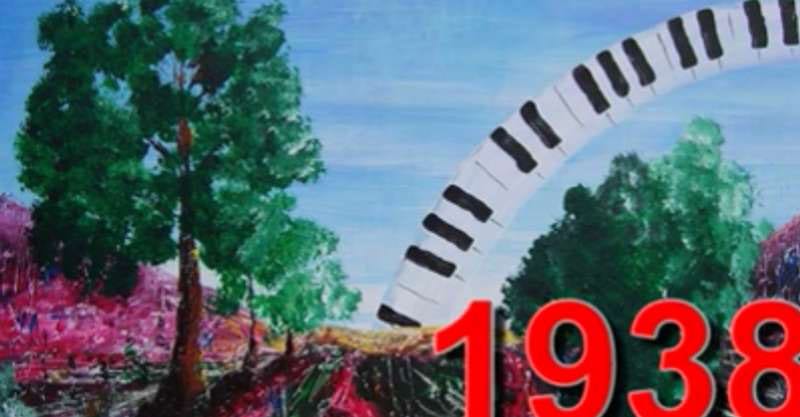
Key Takeaways
- 1938 was a golden year for music, with exceptional recordings by iconic artists like Ella Fitzgerald, Artie Shaw, and The Andrews Sisters.
- These top songs of the year were not only chart-toppers in their time but also remain beloved classics today.
- The best songs from 1938 showcase various musical genres such as jazz, swing music, sentimental ballads, and traditional American music.
- These timeless tracks continue to captivate listeners worldwide and represent an essential part of the cultural legacy of American entertainment history.
Top Songs from 1938, Final Thoughts
1938 was an amazing year for music, with popular recordings by well-known artists like Ella Fitzgerald, Artie Shaw, and The Andrews Sisters. These songs were not only chart-toppers in their time but also remain beloved classics today.
From swing-era hits to jazz standards and sentimental ballads, the top songs from 1938 captured the spirit of the times. Whether you’re a fan of vintage music or simply looking to broaden your musical horizons, these iconic tracks still have much to offer.